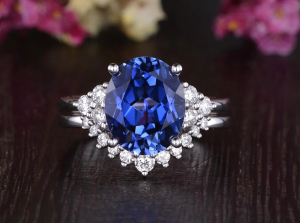Non-Alcoholic Beer Varieties – Must You Give Up Flavor To Reduce Alcohol?

Let’s not confuse non-alcoholic beer, designated NA on labels, for near beer. The maximum alcohol content for non-alcoholic beers in the United States is anything below 0.5{f19aa3268e0de58f68955454d58a1a58d35e804fdb04b2f57dd6dc7aad4ec259} and here alcohol free means just that, no alcohol at all. Fruit juices in Germany can contain as much as 1{f19aa3268e0de58f68955454d58a1a58d35e804fdb04b2f57dd6dc7aad4ec259}. And in England they declare a beverage alcohol free even though it may contain up to 0.5{f19aa3268e0de58f68955454d58a1a58d35e804fdb04b2f57dd6dc7aad4ec259}. Near beer, on the other hand, usually contains about 3.2{f19aa3268e0de58f68955454d58a1a58d35e804fdb04b2f57dd6dc7aad4ec259} alcohol content and is significant for those states that only allow that level of alcohol to be sold in grocery stores. Near beers are often called lite on the label.
Like those who drink only decaffeinated coffee, non-alcoholic beer drinkers are often asked, “What’s the point?” For some it is the fact that few beverages taste as good as a nice cold beer on a hot summer day. But if you are an infrequent drinker, real beer can make you feel as bloated as if it was your time of the month. Who needs that? Plus, you can have a non-alcoholic beer for lunch without worrying whether it will affect job performance. If friends want to go drinking after work, you can still enjoy the flavor, feel you are participating and keep your status as the designated driver. Ladies in early pregnancy should avoid even these beers to be safe, especially in Canada where almost 30{f19aa3268e0de58f68955454d58a1a58d35e804fdb04b2f57dd6dc7aad4ec259} of the forty-five so-called non-alcoholic beers tested actually had more alcohol than stated on the label.
One misconception about non-alcoholic beers is that they don’t always have fewer calories than a light beer. While Bitburger Drive NA has 103 calories and St. Pauli Girl’s NA has 96, Miller Genuine Draft Lite has 64 and Michelob Ultra and Amstel Light both have 95. Less alcohol does reduce calories, but even low alcohol beers contain high amounts of carbohydrates. One company is even touting a variety for hydrating athletes, a Gatorbeer, if you will.
Another false impression is that low alcohol beer is a modern concept. Early American colonists thrived on a version, because they didn’t trust the water. The fact that water was boiled to produce this light beer, which resulted in less disease, virtually proved their point about the bad water. Many brewers before Prohibition tried to make beers with lower alcohol content in anticipation of dwindling revenues.
Non-alcoholic beer tastes watery because it does indeed contain more water. One brewing process involves heating real beer to reduce the alcohol. Since alcohol boils at 173 degrees Fahrenheit and water at sea level boils at 212, you can control the water loss for the most part, while reducing the alcohol. Even so you will lose about a half cup for every gallon of beer brewed. So water is generally added to make up for this difference before the boiling process begins.
Non-alcoholic beer is popular in Europe and consumption has increased around the globe. Here in the United States sales have not been as good. Even though Europeans drank 138 million gallons worth about $2.5 billion in sales, that is still just a drop in the bucket (less than 1{f19aa3268e0de58f68955454d58a1a58d35e804fdb04b2f57dd6dc7aad4ec259}) compared to their real beer consumption of 15 billion gallons. Sales have also climbed in Japan, Asia, Africa and the Middle East. New processing techniques involving lighter fermentation, less alcohol production and more flavor retention may help sales everywhere.
Popularity of non-alcoholic beers in America often coincides with availability. In other words, since O’Doul’s (made by Budweiser) is readily available in many bars and restaurants, it is often your only choice and, thus, your only exposure to a non-alcoholic beer. Taste being a subjective sense, you may want to do your own research. Once you have tasted St. Pauli NA, Clausthaler, Kaliber, O’Doul’s, Haake Beck, Buckler, Old Milwaukee and Erdinger, you can consider yourself somewhat of an expert by American standards. Of course, a non-alcoholic beer expert is a bit of an oxymoron to some.
If you really want to get crazy, you should try the many alcohol free beers of Europe. As for what you can find in the U.S., you may be able to taste test the following: Acrobrau (a pricy wheat beer), Bevo, Bitburger Drive, Bintang Zero (Indonesian), Busch N/A, Cheers Preta (dark beer from Portugal), Coors (Cutter) NA, Gerstel (German), Holsten, Kingsbury (Pabst), Labbat’s Blue, Pabst NA, Paulaner, Sharps (Miller), Texas Select NA and Warsteiner. Cheers!






